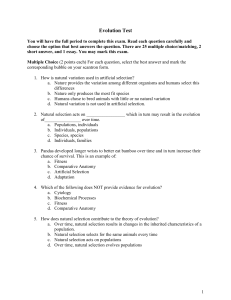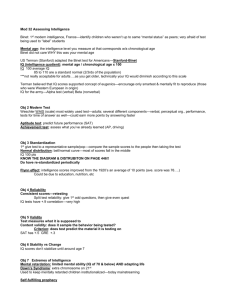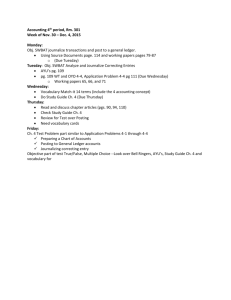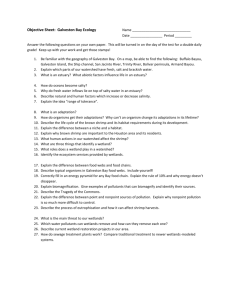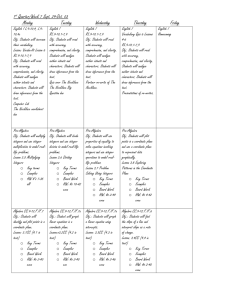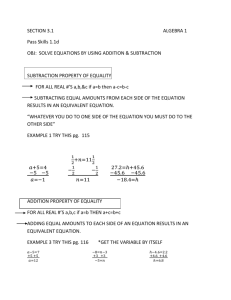Evolution Test-Answers
advertisement
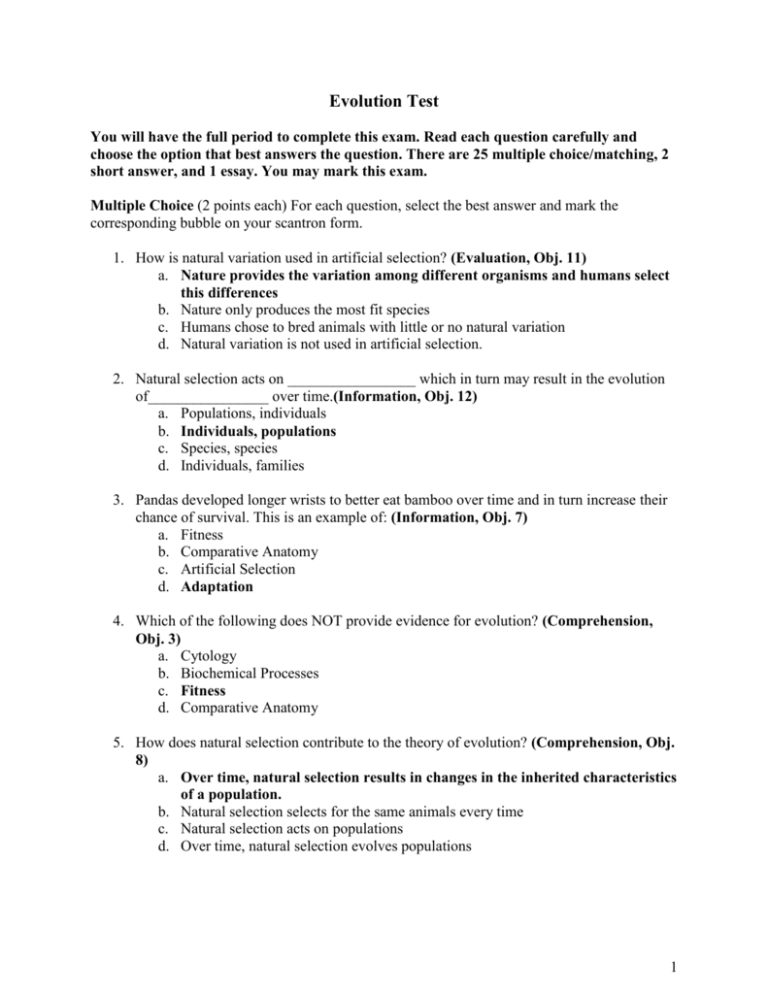
Evolution Test You will have the full period to complete this exam. Read each question carefully and choose the option that best answers the question. There are 25 multiple choice/matching, 2 short answer, and 1 essay. You may mark this exam. Multiple Choice (2 points each) For each question, select the best answer and mark the corresponding bubble on your scantron form. 1. How is natural variation used in artificial selection? (Evaluation, Obj. 11) a. Nature provides the variation among different organisms and humans select this differences b. Nature only produces the most fit species c. Humans chose to bred animals with little or no natural variation d. Natural variation is not used in artificial selection. 2. Natural selection acts on _________________ which in turn may result in the evolution of________________ over time.(Information, Obj. 12) a. Populations, individuals b. Individuals, populations c. Species, species d. Individuals, families 3. Pandas developed longer wrists to better eat bamboo over time and in turn increase their chance of survival. This is an example of: (Information, Obj. 7) a. Fitness b. Comparative Anatomy c. Artificial Selection d. Adaptation 4. Which of the following does NOT provide evidence for evolution? (Comprehension, Obj. 3) a. Cytology b. Biochemical Processes c. Fitness d. Comparative Anatomy 5. How does natural selection contribute to the theory of evolution? (Comprehension, Obj. 8) a. Over time, natural selection results in changes in the inherited characteristics of a population. b. Natural selection selects for the same animals every time c. Natural selection acts on populations d. Over time, natural selection evolves populations 1 6. The struggle for existence refers to: (Information, Obj. 2) a. The hardships newborn offspring face due to predation b. The struggle for animals who cannot breathe c. Members of each species compete regularly to obtain food and living space d. The hardships between parents of raising offspring 7. What is the relationship between natural selection and fitness? (Comprehension, Obj. 8) a. Descent with modification b. Changes in inherited characteristics of a population increase a species’ fitness in its environment. c. Natural selection selects for traits of the most fit animals to pass on genes to the next generation. d. b & c 8. Farmer Joe only breeds the largest hogs, the fastest horses, or the cows that give the most milk. This is an example of: (Information, Obj 10) a. Natural selection b. Fitness c. Artificial selection d. Survival of the fittest 9. The streamline shape of sharks and whales, similar but not due to a common ancestor is an example of: (Analysis, Obj. 1) a. Analogous traits b. Homologous traits c. Artificial selection d. Fitness 10. Metabolism of organisms based on the same complex compounds, like protein cytochrome c, essential for aerobic respiration, is an example of: (Application, Obj. 9) a. Biochemical processes b. Cellular respiration c. Cytology d. Entomology 11. The answer to the previous question is essential in evolution because: (Application, Obj. 9) a. Those processes are not present across all species b. All animals can breathe c. All animals need lungs to breathe d. Those processes are present across all species likely due to decent from a common ancestor. 2 12. Below is a cladogram missing some of its parts. Use the derived characteristic chart to the right of the cladogram and filled in clues to write in the missing parts of the cladogram. Use this cladogram to answer questions 13-15. (Synthesis, Obj. 4) A. Earthworm Trout Human B. Lizard C. Hair Organism D. Legs Derived Character Backbone Legs Hair Earthworm Absent Absent Absent Trout Present Absent Absent Lizard Present Present Absent Human Present Present Present Backbone 13. What trait separates the LEAST closely related organism from the other animals? (Evaluation, Obj. 5) a. Hair b. Legs c. Backbone d. None of the above 14. From this cladogram, we can conclude that ______________ shares the most recent common ancestor with humans. (Evaluation, Obj. 5) a. Lizard b. Trout c. Earthworm d. None share with humans 15. Based on the cladogram above, rank each species in order of distance from the LEAST closely related organism. (Evaluation, Obj. 6) a. Human, Lizard, Trout, Earthworm b. Earthworm, Trout, Lizard, Human c. Lizard, Trout, Earthworm, Human d. Human, Earthworm, Trout, Lizard 3 Matching (2 points each) Match the description on the left to the corresponding term on the right. Some choices may be used more than once and some may not be used at all. (All – Information, Obj. 7) 1. Studying similarities and differences in cells between organisms __A__ A. Cytology B. Derived Characteristics 2. Resemble miniature legs, tails, or other structures that does not affect an organisms ability to survive and reproduce _AB_ 3. Ability of individuals to survive and reproduce in its specific environment__E__ C. Homologous Trait D. Differential Reproduction and Success E. Fitness 4. Characteristic that appears in recent parts of a lineage, but not in its older members__B__ A.B. Vestigial Organs A.C. Cladogram 5. Study of similarities in early development_AD_ A.D. Embryology Short Answer (5 points each) Make sure to answer all parts of the question in order to receive full points. 1. Differentiate between analogous and homologous structures. (Analysis, Obj. 1). Homologous structures are structures that have different mature forms in different organisms due to descent from a common ancestor, while analogous structures are structures or characteristics that are similar however are not due to descent from a common ancestor. 2. List and define Darwin’s Four Postulates of Evolution (Information, Obj. 2) Variability- members of a species differ in some of their characteristics from one another in order for evolution to occur. Heritability- parents can pass these distinct differences onto their offspring. Differential reproduction and success- some individuals will have more offspring than others or produce more offspring than can survive. Struggle for existence- members of each species compete regularly to obtain food, living space, and other necessities of life. 4 Essay (10 points) Make sure to answer all parts of the question in order to receive full points. 1. Define and explain how comparative anatomy, embryology, geographic distribution of living species and the fossil record provide evidence for evolution. Give one example for each. (Comprehension, Obj. 3) Comparative anatomy is using morphological traits, such as skeletal structure in animal limbs, to determine if the organisms are similar due to descent from a common ancestor. We can look at homologous structures, or structures that have different mature forms that are from the same embryonic tissues. An example of this is the limbs of mammals. Embryology is the study of embryos and early development and provide evidence for evolution because, for example, chicken, turtles, and rats all look similar as embryos. Geographic distribution of living species is the existence of similar species in different locations. This provides evidence for evolution because the existence of similar species in different geographical areas is due to descendant from a common ancestor. An example are the Galapagos finches that are slightly different from birds in South America. The Fossil Record provides evidence that living things have been evolving for millions of years. An example is cephalopods fossils which contain 5
